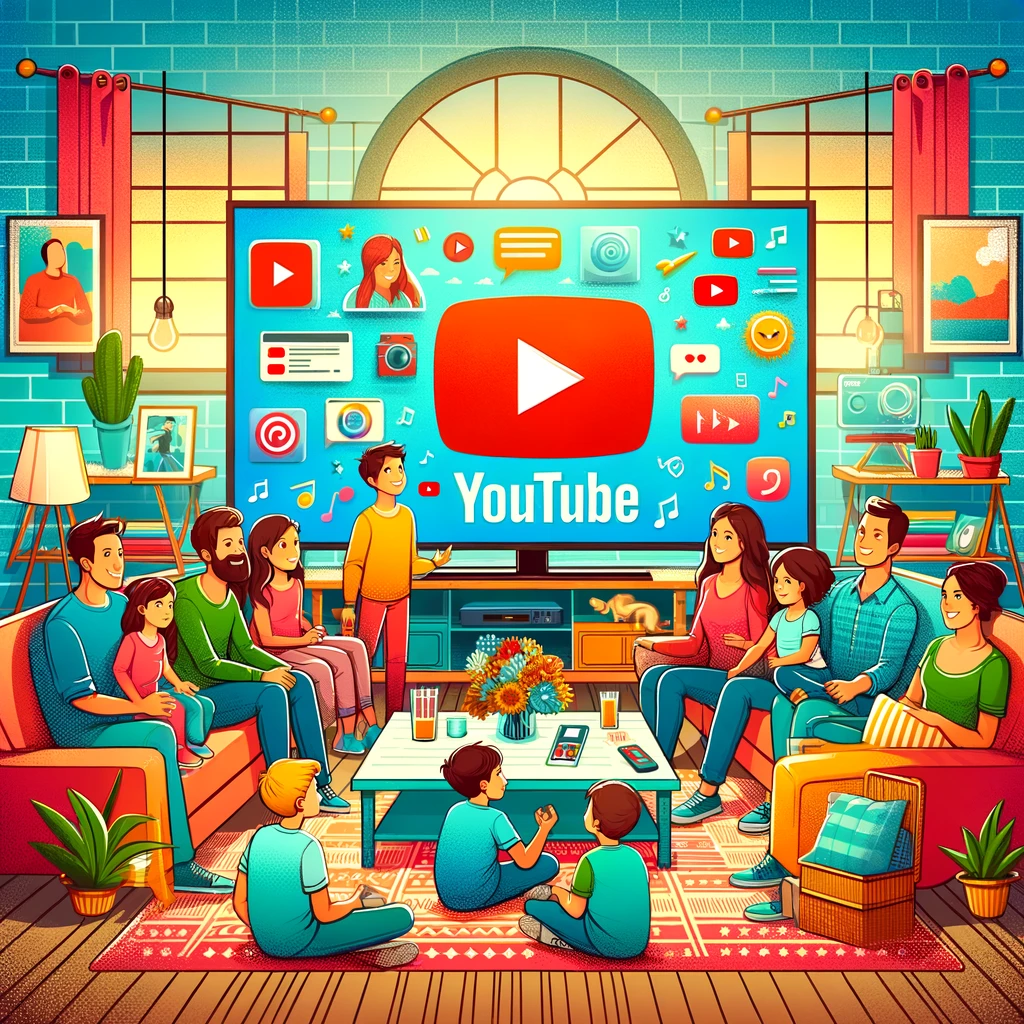The Rise of Co-Viewing: How YouTube is Redefining Family Screen Time & What This Means for Advertisers

YouTube Is The New Family Room. Gone are the days when YouTube was a solitary journey of cat videos and how-tos. Now, it’s where families are congregating. Look no further than the recent announcement by Nielsen that YouTube is the #1 streaming platform by watch time for one full year, ahead of Netflix, Prime Video and others. Viewers globally now watch more than 1 billion hours on average of YouTube content on their TVs every day.
It's more than just an achievement; it's a cultural shift. The TV channel guide has been replaced with a mix of YouTube creators, artists, sports teams and media partners. Influencers and vloggers are the new sitcom stars, with genres ranging from gaming to cooking shows to toy reviews being devoured like the primetime content of old.
According to a recent study from Precise TV, the average child aged two to 12 years old now spends 106 minutes per day on YouTube, blurring the lines between traditional TV and digital content. 75% of kids co-view YouTube, with nearly half watching with their parents nearly every day. Finally, this isn’t just iPads replacing pacifiers: 7 in 10 co-view YouTube when watching YouTube on CTV, with 80% of parents reporting that their kids have asked them to buy things based on ads seen while watching YouTube.
This shift is not just a testament to the platform's expansive content library, but also underscores a significant behavioral trend: the power of co-viewing among parents and children to influence purchase decisions is on the rise.
The Evolution of Co-Viewing
Historically, co-viewing was synonymous with the family gathering around the television in the living room, deeply rooted in the early days of broadcasting. This tradition of shared viewing experiences has evolved significantly with the advent of digital platforms. YouTube has transformed co-viewing from the static confines of the living room to a dynamic, interactive online environments via a myriad of devices used by families on the go – from phones to tablets and back into the home again. This evolution reflects not only changing viewer habits but also the increased relevance of digital platforms in facilitating connections through content.
The Impact of Co-Viewing on Purchasing Decisions
Co-viewing on YouTube isn't just a passive activity; it's actively shaping purchasing behaviors. When parents and children watch together, it's not just the content that's shared - it's the advertisements too. This shared experience is powerful:
- YouTube's ad recall rate with parents and kids aged 2-12 is more than double that of other platforms.
- 60% of parents are more likely to buy products they've seen while co-viewing.
- A significant 40% of parents recall ads seen during co-viewing sessions.

The Importance for Advertisers
It's clear that platforms like YouTube are not just entertainment sources but pivotal in shaping purchasing decisions, particularly within the family unit. The traditional advertising playbook for kids, designed with linear TV or Saturday morning cartoons in mind, is facing obsolescence in the face of digital co-viewing. Advertisers must acknowledge that the one-size-fits-all approach is less effective in a landscape where viewer engagement is fragmented across devices and platforms and where content algorithms fuel discovery. The nuanced dynamics of digital co-viewing, particularly on YouTube, call for a more tailored, authentic approach to advertising – one that resonates with both parents and children.
One example of leveraging digital co-viewing trends is the campaign by Mint Copenhagen for Moose Toys' Goo Jit Zu action figures. By shifting from repurposed TV ads to story-driven, influencer-led YouTube Skippable Ads, they achieved a 400% increase in engagement and doubled sales in the Nordic region, showcasing the power of tailored, contextually relevant content for co-viewing audiences.
To truly capitalize on this behavioral shift, advertisers should pivot towards creating content that is not only family-friendly but also engaging for multiple age groups. This involves leveraging YouTube's rich analytics and COPPA-compliant contextual advertising platforms to craft and amplify ads that are not only relevant but also engaging for co-viewing audiences in a privacy-safe way.
Conclusion
The rise of co-viewing on YouTube represents more than a mere trend; it signifies a paradigm shift in media consumption and purchasing behaviors. For advertisers, it opens a new frontier of opportunity to connect with audiences in a meaningful, engaging way. As YouTube continues to cement its position as a cornerstone of family entertainment, its influence on both viewers and the advertising landscape is poised for even greater expansion.
This article was written by Nick Cicero, an entrepreneur and digital strategist with more than 15 years of experience working to help businesses understand their data, optimize their content engagement and drive revenue. He currently is consulting, advising and investing in tech companies in the media, entertainment and sports industries.
Posted at MediaVillage through the Thought Leadership self-publishing platform.
Click the social buttons to share this story with colleagues and friends.
The opinions expressed here are the author's views and do not necessarily represent the views of MediaVillage.org/MyersBizNet.

